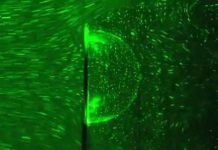A significant landmark was achieved in the history of cosmic studies on 9 February, 2020 when a solar orbiter was successfully launched in the solar system. The orbiter is an internationally collaborated project between the European State Agency and NASA and its primary goal is to study the sun and its various processes. ‘
The orbiter was launched at 11:03 pm from Cape Canaveral Air Force Station in Florida and commenced its way to the inner space. Perfectly as it was designed, the spacecraft separated from the upper stage of the rocket after its launching. Following this it opened its solar arrays and sent the signal back to the Earth. It is believed that the Orbital will take almost 2 years to reach the operational orbit around the sun where it will be able to capture the views of the star poles. But before achieving the goal the spacecraft must undergo a lot of work.
The following articles precisely summons up that what is next for the solar orbiter. The orbiter is a unique trajectory instrument that will not only deploy its communication antennas but will also be the first instrument to capture the images of the poles of the sun. The orbiter is designed very precisely and accurately.
The solar orbiter comprises of various parts and instrumentation. It includes the energetic particles detectors and analyzers of solar wind. It also contains a boom which will be switched on after 36 hours the launching of spacecraft. The orbiter is designed to take 22 close approaches to the sun in the next 10 years and will also complete the flybys of the Venus in order to get a clear image of the Sun poles.
Different phases of the Sun Orbiter:
Commissioning phase:
It will consist of the commissioning phase which will ensure accurate working of all instruments after which it will notice the specific detailing of the sun.
Mission Cruise Phase:
The Sun orbiter will also consist of the cruise phase which will long till 2021 and during this, the spacecraft will conduct three flybys that will help to make it closer to the earth. One flyby will be past the Earth in December 2010 and two will be past Venus till December 2020.
Primary Phase:
After completion of its flybys, the orbiter will start this phase of mission and in five years it will move closer to the sun in an orbital and looping orbit. During this mission, it will complete further Venus flybys increasing the tilt of the orbits so that the poles can be seen visibly.
Why it is important to have a Solar Orbiter?
It is believed to be the first spacecraft that links the sun with the heliosphere and acquire information regarding the various processes taking place within the Sun. The information will help the scientists to fill the gaps in Sun’s magnetic field models. It will also be useful to get idea regarding the sunspots, radiations and the hot plasma present within the Sun and ejected from it.
















